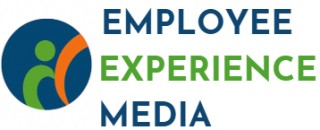
Understanding the Workforce Suite
Comprehensive Solutions for Modern Workforces
In an era where technology intertwines closely with business operations, understanding a workforce suite is key to enhancing employee experience. Essentially, a workforce suite is a unified software solution designed to address various aspects of workforce management. It integrates different functions, including time attendance, shift management, and labor forecasting, into a cohesive system. For businesses aiming to navigate the complexities of modern workforce demands, especially in the public sector, the right suite provides a range of benefits. These include streamlining employee scheduling, improving attendance tracking, and optimizing labor resources. For instance, solutions such as ADP and other enterprise-grade products empower businesses with tools that enhance compliance and management efficiency. Key Components to Consider:- Employee Scheduling: Tailors shifts and schedules to meet both employee needs and business goals.
- Time and Attendance: Offers real-time tracking for absences and time management.
- Analytics Insights: Utilizes data and analytics to provide actionable insights for decision making.
- Global Compliance Solutions: Ensures that global and local policies adhere to compliance standards.
Key Features of an Effective Workforce Suite
Essential Components for an Optimal Workforce Suite
In today's dynamic business environment, an effective workforce suite is crucial for optimizing labor and enhancing employee experience. These suites are comprehensive solutions that integrate various functionalities to streamline workforce management. Here are some key features that define a robust workforce suite:
- Employee Scheduling and Shift Management: Efficient employee scheduling is vital for maintaining productivity and employee satisfaction. A good suite should offer flexible scheduling options, allowing for real-time adjustments and shift management to meet business needs.
- Time and Attendance Tracking: Accurate time attendance systems are essential for managing employee hours and ensuring compliance with labor laws. This feature helps in tracking employee work hours, reducing errors in pay, and optimizing labor costs.
- Absence Management: Managing employee absences effectively is crucial for maintaining workflow continuity. A workforce suite should provide tools for tracking and managing leaves, ensuring that absence policies are adhered to and minimizing disruptions.
- Global Compliance and Policy Management: For businesses operating across borders, adhering to global compliance standards is critical. The suite should support policy management and ensure that the company remains compliant with local and international regulations.
- Data Analytics and Insights: Leveraging data analytics is key to gaining insights into workforce trends and making informed decisions. The suite should offer analytics tools to review workforce data, helping businesses optimize their operations and enhance employee experience.
- Integration with HCM Systems: A workforce suite should seamlessly integrate with existing Human Capital Management (HCM) systems to provide a holistic view of employee data and streamline HR processes.
For businesses looking to enhance their workforce management capabilities, selecting a suite that encompasses these features is essential. By doing so, they can address employee experience challenges effectively and stay ahead in the competitive landscape. For more insights on coordinating digital talent management, explore this resource.
Addressing Employee Experience Challenges
Tackling Challenges in Employee Experience
Managing employee experience effectively is becoming increasingly vital in today’s competitive market. A comprehensive workforce suite can play an important role in resolving common issues that affect experience, engagement, and satisfaction among employees.- Absence and Time Management: High absence rates can negatively impact productivity and morale. An enterprise-grade workforce software solution with advanced time attendance and absence management capabilities can help managers take control. By leveraging real-time data and automated systems, employers can more accurately track attendance and address absenteeism issues before they escalate.
- Employee Scheduling and Shift Management: Poor scheduling practices can lead to frustration and imbalance among employees. Effective workforce management solutions incorporate intelligent employee scheduling tools. This optimizes labor by ensuring fair distribution of shifts, accommodating preferences where possible, and accounting for demand with labor forecasting insights to create a well-balanced schedule.
- Policy Compliance: Adhering to global compliance standards and specific regulations can be a challenging task for businesses operating in multiple regions. Workforce suites that integrate global compliance measures enable companies to flag policy changes and updates across different markets, helping in maintaining adherence and reducing the risks of non-compliance.
- Management Solutions and Analytics Insights: Modern workforce suites provide advanced data analytics, offering employers the tools to review performance metrics and gather actionable insights. This enables better management decisions that enhance the employee experience, ensuring that company objectives align with the workforce’s needs and expectations. By adopting comprehensive workforce management solutions, companies are better positioned to address and resolve challenges, ultimately leading to increased employee satisfaction and productivity.
The Role of Data Analytics in Workforce Suites
The Impact of Data on Workforce Management Software
The role of data analytics in workforce suites cannot be overstated. As businesses strive to enhance their employee experience, leveraging data-driven insights becomes pivotal in optimizing workforce management and addressing various operational challenges.
Workforce suites are designed to consolidate data from different sources, including employee scheduling, time attendance, absence management, and more. This aggregation empowers organizations to delve into analytics insights that can drive strategic decision-making and improve operational efficiency. With features like real-time attendance tracking and shift management, companies can swiftly adjust to dynamic workplace demands.
For instance, labor forecasting becomes more accurate when informed by historical and real-time data, allowing companies to deploy resources effectively and optimize labor costs. Moreover, workforce suites provide an enterprise-grade management solution by integrating data analytics with attendance tracking and absence management applications, giving businesses a granular view of their operations.
Additionally, real-time data insights enhance global compliance by ensuring that workforce policies align with evolving labor laws and regulations. This is crucial for multinational enterprises operating across different regions. A well-integrated employee management solution can flag potential issues and recommend data-driven solutions to preemptively address them, from time attendance discrepancies to pay inaccuracies.
In a modern workforce environment, the ability to harness data effectively differentiates leading organizations from the rest. By implementing sophisticated data analytics capabilities within their workforce software, businesses are better positioned to support their staff, drive employee engagement, and optimize overall workforce performance.
Implementing a Workforce Suite: Best Practices
Best Practices for Implementing an Effective Workforce Suite
Executing a streamlined integration of a workforce suite within an organization requires a meticulous approach to ensure optimum benefits. Whether a company aims to enhance its employee management or boost operational efficiency, certain practices can guide a successful implementation.- Comprehensive Needs Analysis: Before adopting any solution, conduct a thorough review of current workforce challenges and objectives. This involves assessing the unique requirements of the business, including employee scheduling, absence management, and global compliance needs.
- Selecting the Right Software: Choose a workforce suite that aligns with the organization's size and industry requirements. For instance, suites equipped with features like real-time time attendance tracking, labor forecasting, and absence management can be crucial for businesses seeking to optimize labor management.
- Engagement of Stakeholders: Propel adoption by involving key stakeholders in the planning and implementation stages. This may include HR leaders, IT teams, and managers, ensuring that the software meets varied departmental needs and is embraced across the organization.
- Customizing Policies and Processes: Tailor the suite to reflect the business’s internal policies and standard practices. This could involve customizing pay policies, shift management protocols, and integrating HCM practices seamlessly into the workforce management solution.
- Effective Training Programs: Implement comprehensive training sessions for employees to familiarize them with the new tools. Utilize modern learning management software to facilitate efficient knowledge transfer and ensure all employees are confident in using the new suite.
- Monitoring and Reviewing Performance: Establish KPIs and regularly review the suite's effectiveness using analytics insights tools. This strategic analysis allows businesses to flag potential issues and optimize suite performance continuously.
- Global Adaptability: If your business operates on a global scale or in the public sector, prioritize a workforce suite that supports global compliance and can be adapted to various regulatory environments. This ensures enterprise-grade resilience and adaptability.













